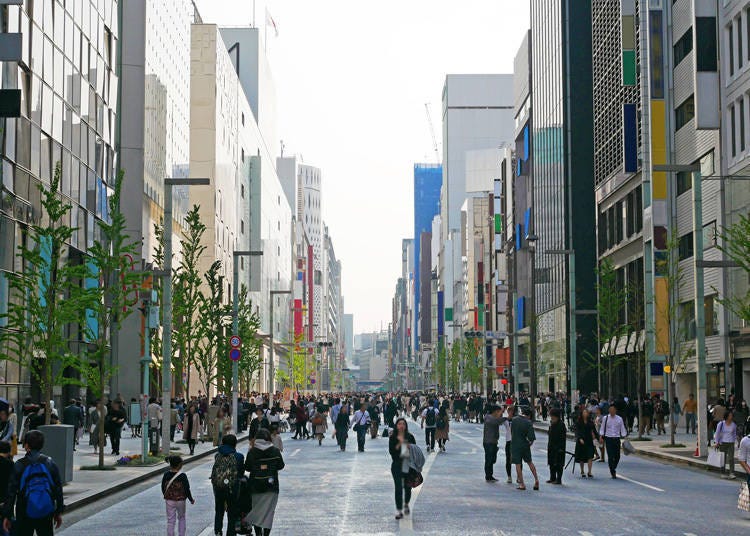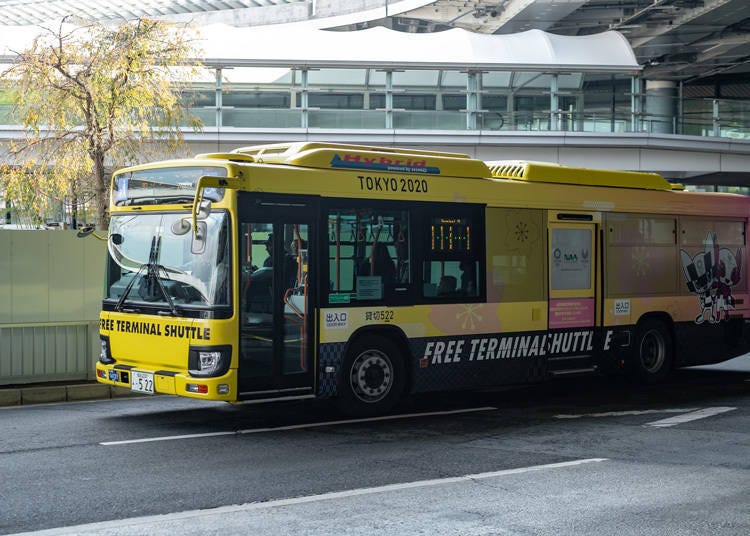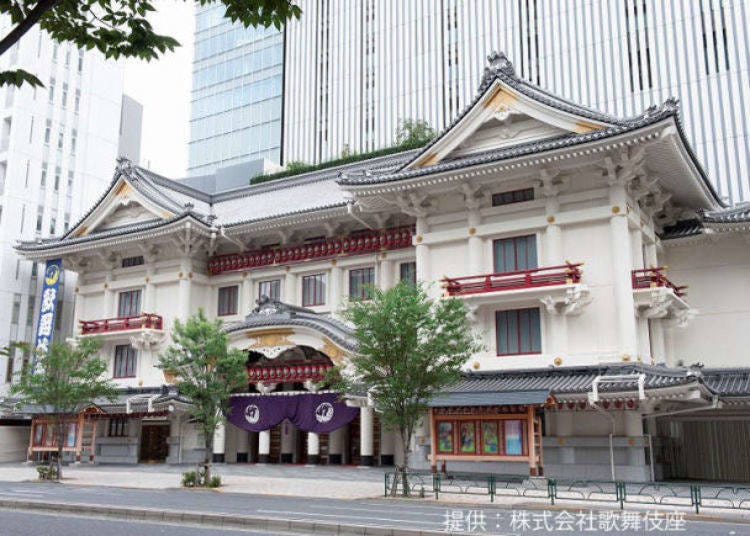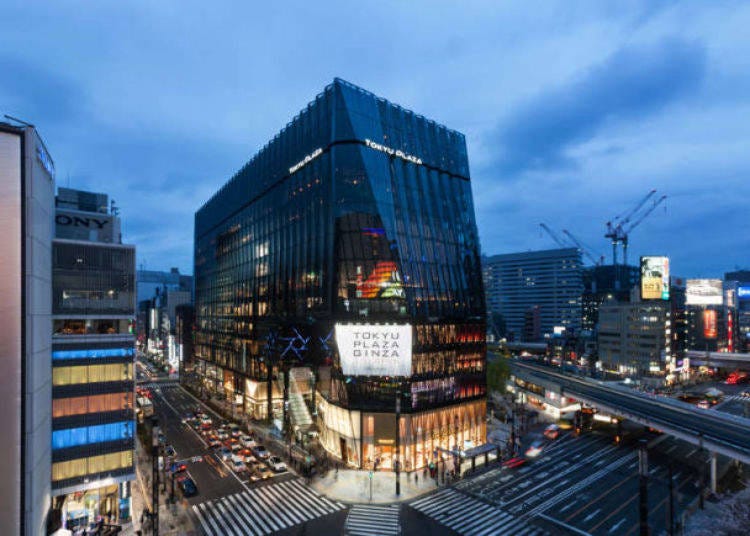Last updated: 22 January 2021
Ginza is a glitzy neighborhood in Tokyo where cutting-edge trends and Japanese tradition coexist. From well-established boutiques to fancy department stores, world-class brand shops, and flagship stores for fast fashion brands from Japan and beyond, it’s an area that is consistently popular among tourists from all over the world.
In the Ginza Station area, at the heart of Ginza, there are several new and old landmarks. Access to these places varies depending on exactly where you are going. Here, we have carefully selected sightseeing spots that are popular with tourists, so be sure to refer to them when you go out.
main image: Lifestyle Travel Photo / Shutterstock.com
What is the Ginza Station area like?

Ginza, at the center of Tokyo’s 23 ‘wards,’ is known as a sophisticated place to stroll and peruse high-end brand shops and famous restaurants.
Ginza was not the original name of the area; instead, there was a location named Ginza Yakusho (a government office) that was responsible for casting silver coins.
Tokugawa Ieyasu, who opened the Edo Shogunate, moved the Ginza Yakusho in Sunpu (Shizuoka Prefecture) to its current location of Ginza 2-Chome in 1612. This led to the name of the place being called Shin-ryogae-cho (“New Money Exchange Town”) but came to be favored under the colloquial name of “Ginza.”
Since ancient times, Ginza has flourished as a city where cutting-edge products and people gather and has played a role as a trend-setting area. It is said that the word “Gin-bura,” or people who enjoyed strolling and window shopping around Ginza, was born in the Taisho era.
Ginza, which continues to evolve while preserving tradition, is still well-known by tourists visiting Japan and is always ranked high as a destination in Tokyo.
Access from major stations to the Ginza area

Andrei Iakhniuk / Shutterstock.com
How easy is it to get to Ginza from spots often visited by tourists? Here we have summarized the primary access approaches from Narita Airport, Haneda Airport, Tokyo Station, and Shinjuku Station to Ginza.
From Narita Airport to Ginza
AIRPORT BUS TYO-NRT is convenient if you have large luggage. The Tokyo Shuttle and THE Access Narita have been integrated to form Japan’s largest airport access bus network, connecting Narita Airport with Ginza/Tokyo.
From Narita Airport, it takes about 77 minutes to travel to Ginza (the times may vary depending on traffic conditions). The fare is 1,000 yen one way, which is a pretty great deal! However, there are a limited number of buses that stop at Ginza, so it may not work for your schedule. In that case, get off at Tokyo Station and then take the Tokyo Metro Marunouchi Line to Ginza Station.
If you want to take the train, take the JR Narita Express to Tokyo Station. It takes about one hour, and the fare is 3,070 yen for an ordinary seat and 4,640 yen for green cars (first class). Cheap tickets for tourists to Japan are also on sale, so you should look into them. (Note that the JR Narita Express is included under the Japan Rail Pass.)
From Haneda Airport to Ginza
If you use the Keikyu Line, you can get to Higashi-Ginza Station without changing trains. It takes about 30 minutes, and the fare is around 500 yen.
If you want to use the Tokyo Monorail, you can first move to Hamamatsucho Station, then take the JR Yamanote Line to Shimbashi Station and take the Tokyo Metro Ginza Line to Ginza Station. It takes about 30 minutes, and the total fare is around 810 yen.
From Tokyo Station to Ginza Station
It takes two minutes to Ginza Station on the Tokyo Metro Marunouchi Line. The fare is around 170 yen. When using JR, take the Yamanote Line to Yurakucho Station. It takes about two minutes and costs about 140 yen. It is then about a 5-minute walk from Yurakucho Station to the Ginza area.
From Shinjuku Station to Ginza
It takes 16 minutes to Ginza Station on the Tokyo Metro Marunouchi Line. The fare is around 200 yen.
Ginza transportation environment
Ginza is easily accessed and can be reached by various modes of transportation, such as trains, subways, buses, and taxis. For the most accessible travel, we recommend using the subway or train.
There are three subway stations in the Ginza area: Ginza, Ginza 1-Chome, and Higashi Ginza. Furthermore, Yurakucho Station and Hibiya Station, which do not have “Ginza” in the station name, are within walking distance, making it convenient to use multiple stations.
Closest stations in the Ginza area

Maiko33 / Shutterstock.com
Ginza is quite extensive, and the nearest station you will want to use will depend on your destination. The location information for each station is summarized below.
● Marunouchi Line/Ginza Line/Hibiya Line Ginza Station
Recommended for those who go to the Ginza 4-Chome and 5-Chome areas.
Nearby spots: Tokyu Plaza Ginza, Ginza Wako Main Building, etc.
●Yurakucho Line Ginza 1-Chome Station
Recommended for people going to the Ginza 1-Chome and 2-Chome areas.
Nearby spots: Kirarito Ginza, Melsa Ginza 2-Chome, etc.
●Toei Asakusa Line/Hibiya Line Higashi-Ginza Station
Recommended for people going to the Ginza 3-Chome area.
Surrounding spots: Kabuki-za Theatre, Ginza Mitsukoshi, GINZA SIX, etc.
JR Yamanote Line/Keihin Tohoku Line Yurakucho Station
Recommended for those who want to use the JR lines. Good access to Tokyu Plaza Ginza. Please note that the Keihin Tohoku Line (rapid service) does not stop at Yurakucho in the daytime.
Which station and exit should you head to for major sightseeing spots?

Here are some popular spots for tourists visiting Japan. Once you have decided where you want to go, check the nearest station and exit.
Ginza Chuo-Dori Street
It is the main street of Ginza with long-established department stores, luxury brand shops, and restaurants. The clock tower of Ginza Wako, which is a symbol of Ginza, was built in 1932.
Ginza has the image of being a high-class area with exclusive boutiques. Still, in fact, there are many shops where you can enjoy casually dropping in, such as Japan’s largest UNIQLO and the country’s oldest stationery store, ITOYA. Chuo-Dori Street is closed to traffic on weekends and public holidays, a time known as “Pedestrian Paradise,” so you enjoy a leisurely stroll through the area.
-
Ginza Chuo-Dori Street
銀座中央通り
-
Address
3-Chome, Ginza, Chuo-ku, Tokyo, 104-0061 -
Nearest Station
Access: 1-minute walk from A2 exit of Tokyo Metro Ginza Station
Hours: Pedestrian Paradise, 1pm to 6pm (to 5pm in winter)
Closed: Open daily -
Address
Mitsukoshi Ginza
Opened in 1930, it is a well-established department store representing Ginza. As its namesake implies, it handles a wide range of products from fashion to household items to groceries. This is a great spot to pick up some souvenirs.
There is an airport-style duty-free shop on the eighth floor. On the first basement floor, there is an information center for tourists and a tax-free counter. This is helpful for shopping if you don’t know how to speak Japanese.
-

-
Address
4-6-16, Ginza, Chuo-ku, Tokyo, 104-8212
View Map
-
Nearest Station
Ginza Station (Tokyo Metro Ginza Line / Tokyo Metro Marunouchi Line / Tokyo Metro Hibiya Line)
1 minute on foot
-
Phone Number
03-3562-1111
-
Address
Tokyu Plaza Ginza

It is a shopping center featuring an exterior with the motif of Edo Kiriko crystal, a traditional Japanese craft. A total of 13 floors are filled with various stores, including apparel shops, general stores, restaurants, etc. filled with the latest trends. On the eighth and ninth floors, there is the Lotte Duty Free Shop, which is familiar in Korea.
There is an open rooftop terrace where you can view the Ginza area from about 50m above the ground. It’s the perfect place to take a break and relax during sightseeing or shopping.
-
Tokyu Plaza Ginza
東急プラザ銀座
-
Address
5-2-1 Ginza, Chuo-ku, Tokyo 104-0061 -
Nearest Station
Access: 1-minute walk from C2 and C3 exits of Tokyo Metro Ginza Station
-
Phone Number
03-3571-0109
Business hours: 11am to 9pm
Closed: 1/1 and once a year -
Address
Lotte Duty Free Ginza store
Enjoy tax-free shopping& added discounts!

Purchase over 10,000yen¥1,000 Discount Coupon and
Purchase over 20,000yen¥2,000 Discount Coupon
Kabuki-za Theatre
Kabuki-za Theatre in Ginza is one of those great spots to really feel the history and traditions of Japan. Kabuki-za, which was reopened in 2013 and has various exhibitions, includes the Kabukiza Gallery on the fifth floor of the Kabukiza Tower and the Kibukicho Square on the second basement floor where you can shop even if you don’t have a Kabuki ticket. It’s an area you’re sure to love – whether or not you’re a Kabuki fan.
For those who want to see Kabuki but don’t have time, or those who want to enjoy a Kabuki experience Kabuki but not spend all day at a performance, there are also tickets available where you can see only one act of a play at a reasonable price. These are sold on a first-come, first-served basis, not by reservation; if you are interested at all in Kabuki, you should definitely give it a try.
-

-
Address
4-12-15, Ginza, Chuo-ku, Tokyo, 104-0061
View Map
-
Nearest Station
Higashi-Ginza Station (Tokyo Metro Hibiya Line / Toei Asakusa Line)
-
Phone Number
03-3545-6800
-
Address
GINZA SIX
Ginza Six is the largest shopping and gourmet spot in the Ginza area. It is a beautiful space that contains around 240 stores and other facilities. It is an excellent spot for non-Japanese tourists with specialized services that include multilingual tourist information, tax-free counters, and currency exchange.
There is a garden on the rooftop overlooking the cityscape of Ginza that is perfect for a break while shopping. The Kanze Noh Theater is on the third basement floor. It is designed to be a cultural facility and is popular with domestic and foreign tourists.
-
GINZA SIX
GINZA SIX
-
Address
6-10-1, Ginza, Chuo-ku, Tokyo 104-0061 -
Nearest Station
Access: 2-minute walk from Tokyo Metro Ginza Station Exit A3
Directly connected from Tokyo Metro Ginza Station via an underground passage
-
Phone Number
03-6891-3390
Business hours: 10:30am to 8:30pm (Restaurant 11am to 11pm)
Closed: Irregularly -
Address
Make a plan and go around Ginza efficiently!
The Ginza Station area has many kinds of facilities where you can enjoy fashion, culture, and gourmet food. It’s a surprisingly large area, so it’s best to plan out what you’d like to see and do before going.
*To prevent the spread of new coronavirus infectious diseases, business hours may be changed or temporary closures at each store.
Written by: Masaki Tomoko, Dali Corporation
After graduating from university, she worked for a major food manufacturer doing sales promotion and sales support. After working for 20 years, she switched careers to become a freelance writer. Having been in the food industry for a long time, she is knowledgeable in fields such as health and beauty through food.
*This information is from the time of this article’s publication.
*Prices and options mentioned are subject to change.
*Unless stated otherwise, all prices include tax.



















;Resize=(1180))



Discussion about this post